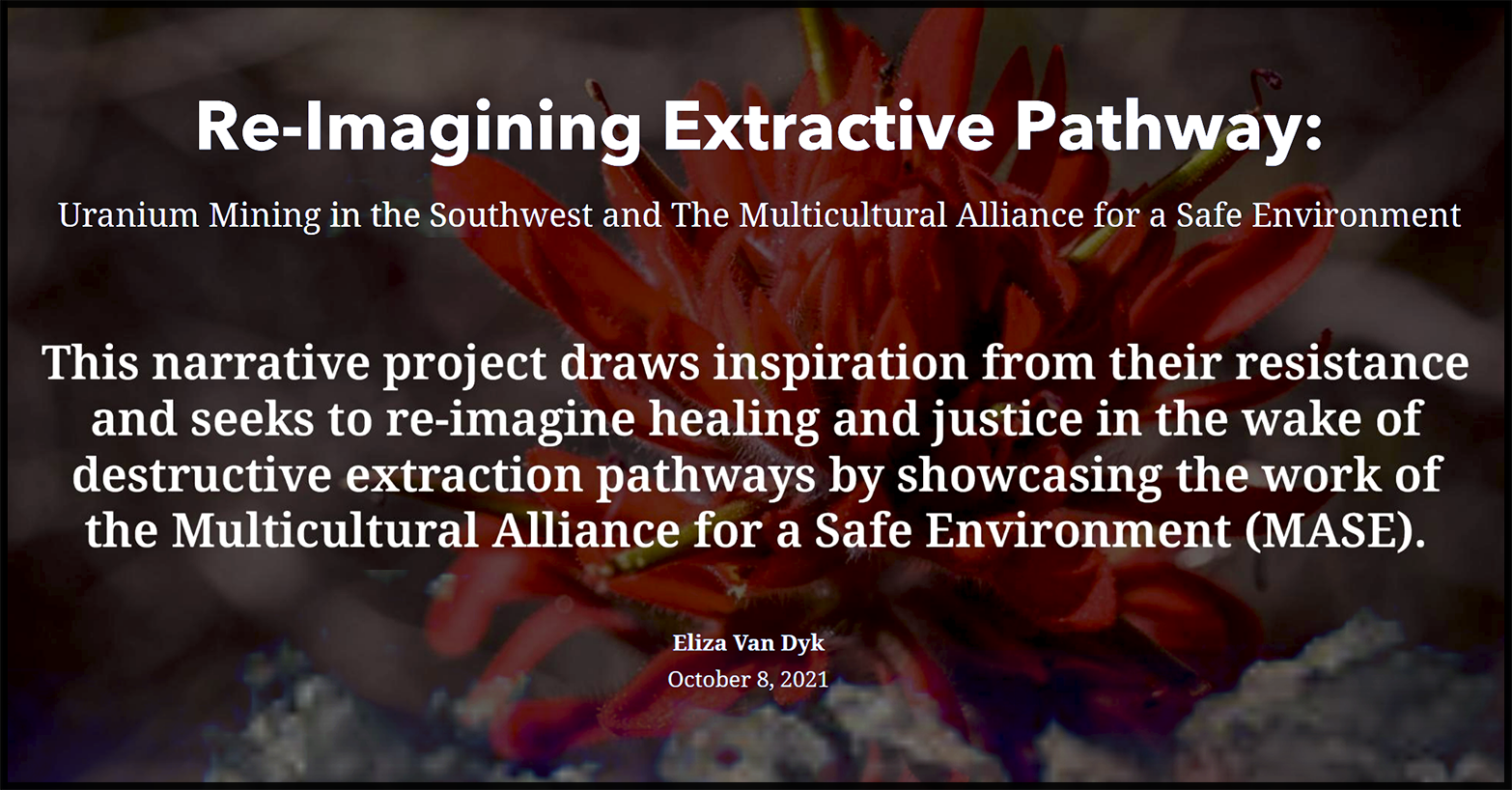Activists mount campaign for EPA to scrap N.M. uranium mine permit || Red Lodge Clearinghouse
Activists mount campaign for EPA to scrap N.M. uranium mine permit Posted: May 9, 2012 Written by MANUEL QUINONES, Greenwire Environmental advocates are pressing U.S. EPA to revoke a key permit for a planned uranium mining facility in northwestern New Mexico adjacent to the Navajo Nation. The New Mexico Environmental Law Center and Eastern Navajo Diné Against Uranium Mining say EPA is reconsidering a 23-year-old aquifer exception for Uranium Resources Inc.’s project in the community of Church Rock, N.M. It is an area already polluted by past mining activities. “There is a long legacy and many unhealed sores from uranium mining on Navajo land by companies that look to make a quick profit,” said ENDAUM board member Larry King, calling EPA’s action “unprecedented.” “I’m sick of watching my community suffer from the poisons of uranium mining.” An aquifer exception is essential for the “in-situ recovery” or “in-situ leach” uranium mining method. The process generally involves pumping water, oxygen and sodium bicarbonate to free uranium underground and then suck it to the surface. Industry leaders say it is a safer and cleaner way of mining uranium. They say EPA does not give projects aquifer exceptions unless groundwater is already polluted. Companies are not allowed to pollute drinking water (Greenwire, Dec. 23, 2011). But environmentalists and wary residents say ISL uranium recovery puts people at risk, especially in areas like northwestern New Mexico, where residents rely on wells for drinking water. Eric Jantz, an attorney for NMELC, which has been helping ENDAUM fight new mining for years, said it “would contaminate potable water with radiation and heavy metals, making it unfit for consumption forever. The EPA has both the legal authority and moral obligation to revoke the aquifer exemption.” The groups have collected more than 9,000 signatures on the activism website change.org. But neither EPA nor the company are saying much about the potential of blocking the Church Rock project. A regional spokesman for the agency said in a recent statement, “I can confirm EPA Regions 6 and 9, as well as the Navajo Nation are discussing the issue.” Uranium Resources spokesman Mat Lueras said, “URI has not received any notification by the EPA on any action at this time.” In 2010, the U.S. Supreme Court refused to hear ENDAUM’s case against the Nuclear Regulatory Commission’s license for the projects. Hoping to attract international support, last year the group filed a complaint with the Inter-American Commission on Human Rights (Greenwire, May 16, 2011). NRC regulates in-situ uranium facilities in cooperation with EPA and state agencies. Oversight can vary depending on state agreements with the federal government. EPA is reviewing standards for uranium mining waste to see whether changes are necessary. The agency is focusing on in-situ recovery because of its increased popularity. A spokeswoman said the rules were last revised in the mid-1990s. EPA is also working on new standards dealing with radon gas emissions from mining and milling waste under the Clean Air Act. But last October the agency approved waste piles and an evaporation pond for a conventional mill in Colorado (E&ENews PM, Oct. 27, 2011). Environmentalists had wanted the rules overhauled before the project proceeded. Even with uranium prices hovering at about $50 per pound, lower than a high of $73 before the Japanese nuclear meltdown, companies are moving forward with increased mining in the United States to power the world’s nuclear reactors. Colorado-based Ur-Energy Inc., for example, is close to finishing the permitting process for its Lost Creek in-situ project in Sweetwater County, Wyo., a top uranium-producing state. The Wyoming Department of Environmental Quality issued a key permit for the project last year, just weeks after it got its NRC license. And the Bureau of Land Management released an environmental impact statement late last month. via Activists mount campaign for EPA to scrap N.M. uranium mine permit || Red Lodge Clearinghouse.





